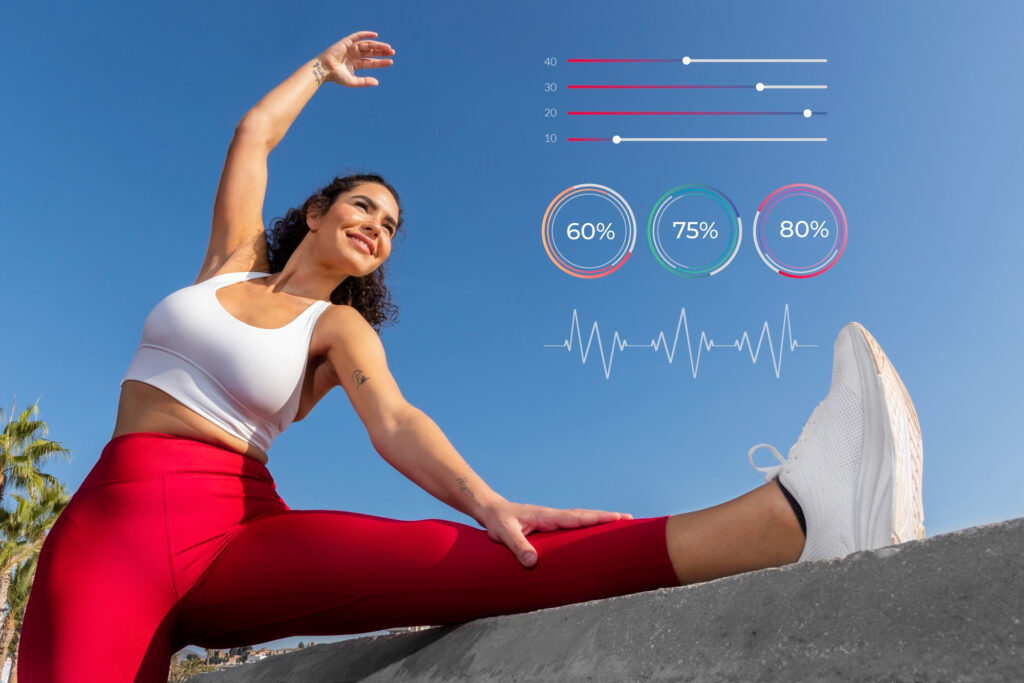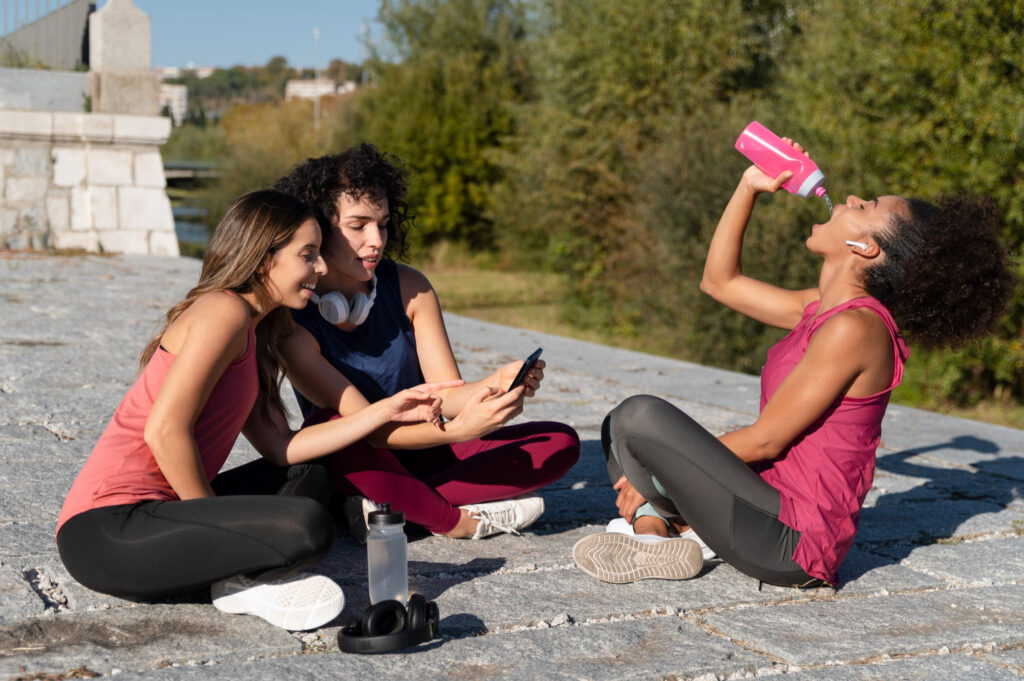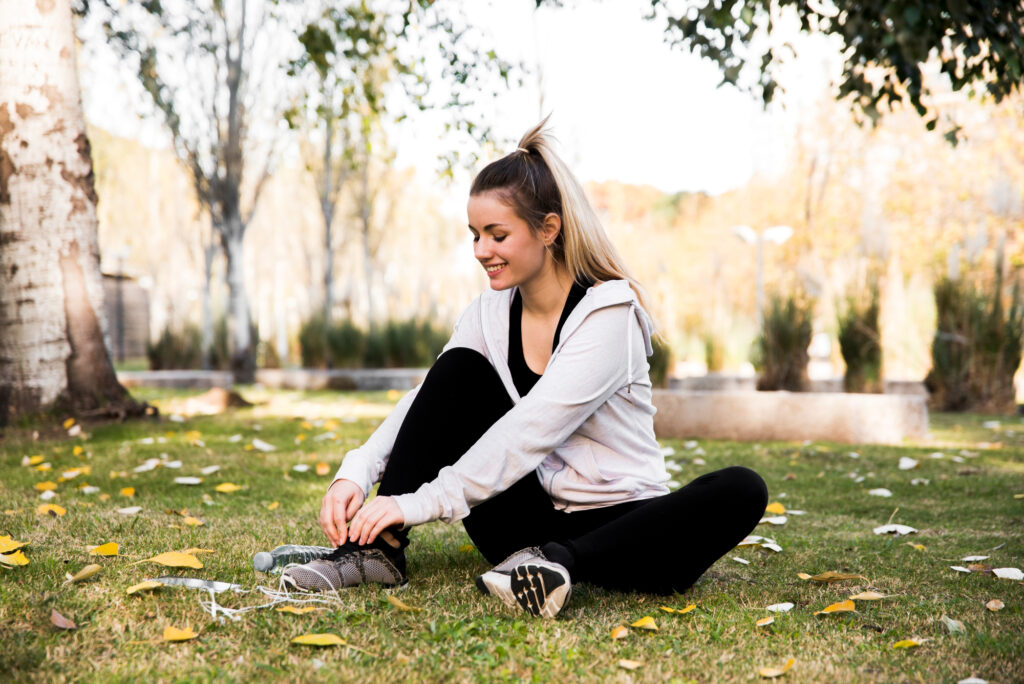Introduction
One of the biggest players (and easiest) in improving health and wellbeing is exercise. However, finding the motivation to start exercising can be challenging. But, from elevating overall physical health to enhancing mental wellness too, once you realize the comprehensive yawning benefits of regular exercise, you see the whirlpool in which exercising should be fixed-in for everyone. If you, like many Americans, want to see year-long improvements in your health profile… Everything from heart disease and diabetes risk factors (like cholesterol) to bone density or muscle mass, read on for the real benefits of exercise, both mental and physical, along with tips at the end of how to get moving.

If you are working on losing weight, getting your heart into shape, or just feeling better in general, then understanding how exercise affects health is a major key. Lack of Exercise: Besides the health risks we just mentioned, regular physical activity boosts energy, enhances focus even with healthy sleep habits, and encourages better regulation. So, for beginners, we will give you an easy step-by-step way of doing this so that you can make sure to get in a routine plus ways to stay motivated! And we will see just some of the reasons why exercise is good for you, but also how simple it is to move in the right direction.
1. Physical Health Benefits of Exercise

a. Improves Cardiovascular Health
Improve cardiovascular health Exercise is one of the best ways to keep your heart strong and healthy. The heart rate and blood flow are often elevated through cardiovascular exercise or aerobic exercise, making the heart improve its capacity to pump blood. Ultimately, consistent aerobic training will strengthen the heart muscle so that it’s not as necessary to use those energy-draining mechanisms. All this leads to a decrease in the burden on the muscle of life, a reduction of pressure, and an improvement in blood flow.
Various studies have indicated that people who exercise regularly are much more likely to avoid heart or vascular disease, high blood pressure, and so on. Aerobic activities—any exercise that raises your heart rate—are great for preventing cardiovascular disease. These include lunges, making use of free weight exercises or machines at a gym with resistance bands and weights, as well as swimming and running! The American Heart Association says 150 minutes per week of moderate-intensity aerobic exercise can help prevent heart issues.
b. Strengthens Muscles and Bones
Strengthens muscles and bones For skeletal muscle maintenance and skeletal muscle building, regular exercise is necessary, specifically resistance training. Sarcopenia, or the loss of muscle mass as we grow older, will cause weakness and frailty if not prevented properly. Strength training, like weightlifting, resistance band exercises, and bodyweight moves, helps to offset this by encouraging muscle development in the muscular-skeletal system.
So, rather than cystic fibrosis negatively impacting bone buildup through weight-bearing activities and an ability to gain muscle mass, it is more related to the consequence of loss, which occurs due to respiratory dysfunction. Bone Density: Regular exercise increases bone density, which decreases your risk for osteoporosis and broken bones. Among the best things you can do for your bones is to participate in weight-bearing activity, which makes them and even keeps them healthy, a crucial issue once we grow older or whenever there is a raised chance of growing osteoporosis.
c. Enhances Flexibility and Balance
Enhances Flexibility and BalanceTwo parts of physical health that are less popular but equally important components as the usual intensity or cardiovascular exercises to weight loss and in particular balance and flexibility. Flexibility Work: Stretching, Yoga, and Pilates Flexibility work allows for improved joint mobility, leading to better performance while reducing the risk of injury. Stretching exercise: this helps keep muscles and joints mobile, reduces the risk of injuries or strains, and increases functional mobility.
Balance exercises are particularly beneficial for older adults. Poor balance is one of the leading causes of falls in seniors, which can lead to serious injuries. Practicing balance exercises, such as standing on one foot, Tai Chi, or yoga, can significantly improve stability and reduce fall risk. Improved balance also enhances athletic performance for younger individuals, making it an essential part of a well-rounded fitness routine.
d. Supports Healthy Weight Management
Exercise is one of the most important aspects of weight management as it burns calories and increases metabolism []. Although diet is key to losing weight, exercise also provides a vital component in the most effective strategy for keeping it off. Running, cycling, and swimming are excellent examples of cardiovascular exercises that burn calories, while resistance training builds muscle mass, which subsequently increases the resting metabolic rate.
The effect of exercise on body composition is less well-known. Exercise reduces fat mass and, at the same time, protects lean muscles, which are responsible for giving the body a more firm appearance. In this context, if you learn how to balance diet and exercise in a smart way (as described earlier), it is simpler, for your body to quickly manage weight and remain within that level.
e. Boosts Immune System
Boosts Immune System Little-known health benefits of regular exercise are the well-being of your immune system. Low to moderate exercise enhances immune function by improving the circulation of white blood cells (WBC), making it easier for them to reside and move also through remote parts of your body. It can help the body to detect and more efficiently fight infections, which ultimately lowers your risk of all those common illnesses like colds and flu.
The immune system is boosted with moderate exercise, but excessive/overtraining can temporarily weaken the immune defenses. Research indicates an exposure of 150 to up to 300 minutes per week involving moderate-intensity physical activity is most beneficial for the immune function. It is because routine, modest exercise primes the body’s immune system to much better take care of infection.
2. Mental Health Benefits of Exercise
Mental Health Benefits of ExerciseAside the benefits strength in exercise offers, it also plays an important role in mental health. It influences brain chemistry and structure in a way that has beneficial effects on mental health outcomes. Effects we can harness Look at a few of these powerful effects.

a. Reduces Stress and Anxiety
Exercise is the most natural, effective stress-relieving exercise in this world. Endorphins are what exercisers describe as “runner’s high.” Exercise also encourages endorphin production (which is our wonderful and relaxing response to exercise). Exercise can have us thinking about something other than stress while we take a mental vacation. Research has shown that as little as just 10 minutes of exercise (even a simple walk) can help ease tension and stress.
Physical Activity Similarly, it may also lower the levels of cortisol, our horrific stress hormone. Overproduction of cortisol may result in certain medical problems, including anxiety, weight gain, and insomnia. It helps you modulate cortisol, which reduces stress in the long run. Yoga, walking, or swimming practices are best especially effective to reduce anxiety and control day-to-day stress doses.
b. Improves Mood and Fights Depression
Improves mood and fights depression Physical activity is unarguably one of the best ways to bring up your mood, and for good reason: Studies show that exercise can be as effective a treatment for mild to moderate depression as an antidepressant. In addition to the alchemical nature of endorphins, exercise boosts the production of serotonin and dopamine in our brain—two neurotransmitters that play a key role when it comes to mood regulation. The release of these chemicals provides a natural high in our bodies, automatically lifting our mood and making us feel better.
Even with medication to treat it, exercise can be an equally effective treatment for mild-to-moderate depression. This can then help you accumulate great mental headspace, potentially feeling normal and maybe even fulfilled that at any point throughout the day enables you time to focus on a physical set of tasks. Exercising, like either walking or running, dancing, and other kinds of recreational sports activities in groups, is a very good way to increase your mood and reduce depression.
c. Enhances Cognitive Function
Enhances cognitive function One of the most powerful influences on memory, focus, and learning is exercise on the brain. Exercise boosts circulation to the brain, delivering oxygen and nutrients that it needs for peak performance. It also promotes the separation of brain-derived neurotrophic factor (BDNF), a protein that strengthens survival research and intellectual consumption.
It is known that people who are more physically active and therefore able to exercise their brains ‘ built-in capacities tend not to experience cognitive decline, although they may still be at some risk depending on certain circumstances. Exercise also increases mental clarity and focus for better task concentration. Aerobic exercises—activities that increase oxygen flow to the brain, such as jogging or cycling.
d. Promotes Better Sleep
Promotes Better Sleep Exercise could serve as a natural remedy for those who suffer from sleep disorders. Evidence suggests that if you get regular physical activity, your sleep patterns improve and the time to go to sleep is shorter. Physical activity not only expends more energy and helps make your body ready for sleep, but it also lowers stress levels, which is part of the reasons why people fall asleep. Regular exercise deepens slow-wave sleep (otherwise known as “sleep quality”), which is the most restoring phase, crucial for cellular repair and immune function.
People should also take into account the time they exercise. This can influence how well one will sleep after that exercise session. Working out in the morning or during the daytime can reduce sleep, as it helps modulate our body’s inherent circadian rhythms. Although moderate exercise may not be a problem, vigorous activity can lead to difficulty falling asleep too close to bedtime. Exercise is essential and can improve the quality of our sleep, making us have more complete rest.
e. Boosts Self-Esteem and Confidence
Boosts self-esteem and confidence Lastly, setting fitness goals and meeting them (even the smallest ones) creates a great sense of achievement, which can increase self-worth. Physical fitness promotes body positivity and confidence. The self-belief that comes from body gains pours into other areas of your life, and you start loving the person in the mirror more.
Whatever type of exercise you choose, it is about taking care of yourself and doing one positive thing for your life. And there is much to grow from self-discipline, resilience, and perseverance, like those involved with exercise. Involvement in fitness activities, whether solo workouts or group sessions, pushes the determined boundaries, challenging them every day.
3. Social Benefits of Exercise
As a professional runner on the circuit, you meet people from all over. When people are doing physical things, they tend to interact more when their walls are down, and a lot of this can also lead to fortifying your social safety nets.

a. Builds a Sense of Community
Builds a Sense of Community Joining a gym, local run club, or yoga can help you feel part of something. The camaraderie and support that are encouraged in the group workouts help you to find new friends and grow your network. For others, working in a fitness group becomes the cause of motivation and fun, which helps to maintain your workout schedule.
The community provides the kind of emotional support and accountability that one needs to stick with a habit for a longer period. Interactions within the community can help to alleviate some of those feelings. Microcosm happiness and Social involvement are helpful for our sense of belonging and feeling less isolated, which in turn significantly supports mental health.
b. Enhances Teamwork and Cooperation
Develop skills in working with others as a group class. Having a common fitness goal, whether it’s winning at the ball or getting you through the hell of that last workout, always brings us together in an environment where we’re all born into this thing as one. Meanwhile, sports and fitness groups teach people to own one another, which cascades out into the general culture.
c. Encourages Healthy Competition
Encourages healthy competition Competition can also be a great motivator for other people to raise the standards in which you hold yourself, but most of all, do your best. Either getting involved in a healthy fitness competition or joining a sporting league brings out that competitive edge, where you keep pushing yourself to ensure your best performance amongst like-minded people. And in the process, you build up confidence and grit that will enable you to channel your competitive edge into other areas of life.
d. Reduces Social Anxiety
Reduces social anxiety Fitness classes are a great way to meet other people, learn some social skills, and adopt new ways of coping with your anxiety. Being able to share the focus on exercise can make social interactions feel more comfortable and enable us to connect without that forced feeling so many of these stories have. Eventually, with practice, they can begin to learn methods of dealing with social anxiety and confidence in social situations.
4. How to Get Started with Exercise
How to Get Started with ExerciseThe thought of starting to exercise can seem daunting, but taking it one step at a time makes all the difference. A beginner’s guide to starting your fitness journey:

a. Set Clear Goals
Set clear goals Before you start any training program, your fitness goals must be clear and achievable. Having goals makes you interested and gives your workouts a purpose. Goals must be specific, measurable (something tangible to shoot for), attainable (realistic relative to the circumstances/conditions/environment), applicable, and/or relevant to move you toward where or what you want. And lastly, time-sensitive: When do I get this realization? So, for example, instead of just saying, “I want to get fit,” you can say, “Okay, great, but what does that look like? I don´t know.” But maybe a new goal here could be closer to this. If going for walks is something you never do, start small. Commit to training 3 days a week, then ramp that number up as you feel like it. Meeting these smaller milestones creates momentum and keeps you engaged in your improvement.
b. Find an Activity You Enjoy
Find an Activity You EnjoyIf you hate the gym or abhor running on a treadmill, that does not mean you must rule exercise completely out. If this exercise regime has any chance of becoming a long-term one, you need to be doing something you love. You might dance, go on a hike or a bike ride, swim in the ocean or the pool, play the sport you enjoy the most, or enroll in some type of fitness class. You are almost certain to want to do the activities you choose.
c. Start with Basic Exercises
Start with Basic ExercisesIf you are a beginner to exercise, do foundational exercises that help strength and flexibility. Basic movements like squats, lunges, push-ups, and planks are all great exercises that need no equipment and can be done at home. Sometimes practicing some basic exercises instead of focusing on difficult workouts can provide us enough confidence and keep us free from injuries.
Keep to a balance of cardiovascular workouts that move both strength-building exercises and flexible motions that hit all areas for fitness. This can be something as simple and easy to accomplish, such as starting with a 10-minute walk and then doing a couple of bodyweight exercises followed by some light stretching.
d. Create a Workout Routine
Create a workout routine. For committing to the habit, having a structured workout routine is important. Take time to plan your workouts and put in some planning on the composition of exercise, length, how often, etc. Beginning with a small routine, such as three 20–30 minute workouts per week, can help build exercise habits so you do not cut back too quickly by assigning yourself new goals.
Having a routine not only makes the exercise easier to follow, but it also means that you will be exercising with regularity. As you feel more at ease, then you can slowly add a few minutes and intensity to your exercises.
e. Prioritize Rest and Recovery
Prioritize Rest and Recovery Sleep is an essential part of any fitness program. Your body needs time to repair and rebuild post-training, which is when your muscle growth/hypertrophy gets stimulated. Pushing too hard without rest will likely result in burnout or an injury, so make sure to have at least 1—2 days off each week. By resting when you should, you keep yourself motivated and prevent overexertion.
f. Track Your Progress
Track Your Progress When you track your progress, it acts as a strong motivator because you can see where you have reached. For those who prefer pen and paper, a journal can be used to log workouts—both the exercises you did as well as how you felt afterward. Keeping track of what you are consuming can also allow you to establish patterns with your results and make changes to be better.
5. Tips for Staying Motivated
Tips for Staying Motivated Oftentimes, the hardest hurdle to workout completion is maintaining motivation. These tips are so simple and easy to follow that they sure will keep you fresh in your fitness journey.

a. Set Short-Term and Long-Term Goals
Set short-term and long-term goals When you have short-term and long-term goals, it will help keep focus as well as give a sense of satisfaction along with the goal. Long-term goals, such as losing 50 pounds in a year or training for your first half marathon, may motivate you over the long haul but can leave space-time gray areas between try-again dates. Short-term goals like hitting three workouts per week and finishing that 5K keep small wins playing into regular cycles of motivation every month (or whatever your target cycle happens to be). Long-term goals, such as improving cardiovascular health or gaining muscle over a year, are what keep your eyes on the prize. Up with you, breaking your fitness journey into bite-sized pieces can make it feel more manageable and keep you from burning out.
b. Mix Up Your Workouts
Mix Up Your WorkoutsWho wants to do the same routine over and over anyway, right? Add some variety to spice up your exercise life. Varying your workouts with new forms of physical activities like swimming, dance classes, or yoga can help keep you interested and target different muscle groups. Mixing it up can help make workouts more engaging, but it also guarantees you are involving your body in a multitude of movements.
c. Reward Yourself
Reward YourselfRewarding yourself when you hit key markers is one of the best things I have ever done for myself. Those rewards don’t have to break the bank—a nice snack, watching that movie you’ve been wanting to see, or buying yourself new workout gear could be enough. Encouraging good habits means that they are more likely to continue the cycle.
d. Find a Workout Buddy or Support Group
Find a workout buddy or support group. Working out with a friend or joining a support group can significantly boost motivation. A workout buddy adds accountability, ensuring you stay on track and push each other to achieve your goals. Whether in person or online, support groups create a sense of camaraderie, making exercise feel more enjoyable and social.
e. Track Your Progress and Celebrate Small Wins
Track Your Progress and Celebrate Small WinsThis can be achieved either by engaging in physical activity with a friend or becoming part of an exercise support group. A symbolic workout buddy has something called accountability, meaning you do not want to let each other down—keeping one another on track with your goals. Whether offline or online, these support groups provide a community of other people to help you feel that exercising is more like play than work.
f. Focus on the Enjoyment Factor
Focus on the enjoyment factor Celebrate even the small wins as they are moving you closer to your overall fitness goals. Note it down in a fitness journal or text your date with full details on the most popping health and wellness app out there that logs how you are feeling today vs. yesterday. Reflecting on your wins can help you see how far you have come and encourage yourself to keep going.
Conclusion
Conclusion In a study published this year, exercising was one of the few things humans do that measurably makes people healthier—even when we measure only 10 different health markers over time. Physical activity can do everything from building muscle and improving heart health to reducing stress, increasing our mood, and helping us socialize. Getting into the habit of exercise can be daunting, but with attainable goals in mind and steps you care to take that make sense for your lifestyle, incorporating exercise just becomes second nature. You need to remember that every small effort counts and it is not easy to see the progress in a day. Enjoy each step of the journey, celebrate your little win in this process, and embrace these changes with exercise. Because no matter your goal—better health, a calmer mind, or a stronger body—exercise provides a natural solution that is key to personal wellness.
Health Insurance Related Articles
- Why Private Health Insurance is Better
- What is Health Insurance? A Comprehensive Overview
- Key Terms You Need to Know in Health Insurance
- How Health Insurance Works
- Private Health Insurance for a Family
- Who Needs Private Health Insurance?
- How Private Health Insurance Works
- How Much Does Health Insurance Cost Per Month in the UK?
- What is Insurance and Its Benefits?
- How Does Insurance Work?
- Top Healthcare Companies to Work For
- Is It Worth Having Private Health Insurance in the UK?
- Which Healthcare Insurance is Best? An Informative Guide to BCBS
- What Insurance Does a Family Need?
- A Beginner’s Guide to Private Health Insurance
- How to Maximize Your Health Insurance Benefits Without Overpaying
- Understanding health insurance billing and reimbursement
- What is Life Insurance?
- An Essential Guide to Navigating the Healthcare System



Pingback: 10 Simple Habits to Boost Your Health Every Day
Pingback: Understanding the Importance of Sleep for Overall Health
Pingback: How Health Insurance Impact Your Overall Health and Wellness
Pingback: The Ultimate Guide to Improving Your Health
Pingback: How Quality Rest Transforms Your Health and Well-being
Pingback: Health Insurance for South Dakota Nomads: US, UK & Europe Coverage
Pingback: Burger King Health Insurance in Europe: 2025 Guide
Pingback: Health Insurance – RealFoodZim: 2024 Guide for Europeans
Pingback: Rolex insurance: How to Insure Your Rolex Watch in Europe
Pingback: Travel Insurance for Diverticular Disease: How to Travel Safely
Pingback: Moringa Oil: The Superfood Secret Your Health Has Been Missing
Pingback: Isabella Piercing: Risks, Benefits, and Everything You Need
Pingback: Can You Get Pink Eye From a Fart? The Gross (But Fascinating) Answer - Health Insurance Guide - Expert Tips and Insights